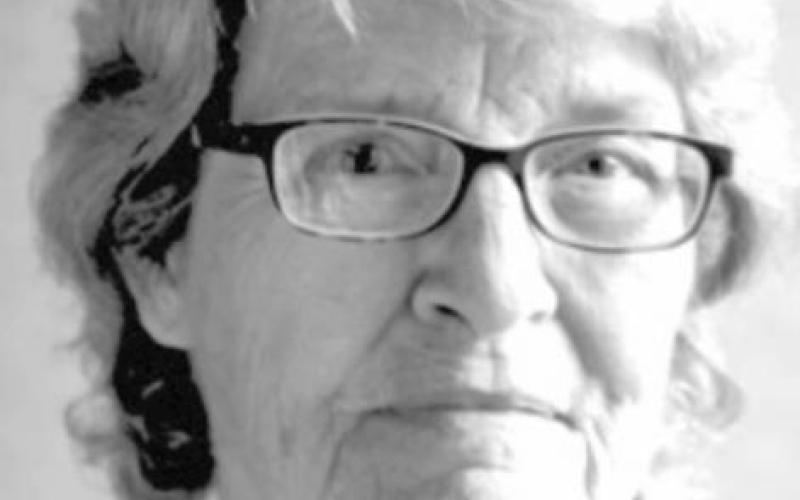Double Mountain/Harpersville founders
Those of you who are more inclined to identify specific towns in relation to landmarks in the county, maybe more aware that Double Mountain became Harpersville because it was organized at the foot of Double Mountain. Of course, since I originated in Pennsylvania, where there are the real Appalachian Mountains, I consider the slight uprisings in Stephens County topography to be more like ‘hills’ than ‘mountains.’ Tongue in cheek touch of humor there Breckenridge. As most of you know, I have called this county home for more than four decades and my children all graduated from Breckenridge High School.
Harpersville is located about eight miles south of Breckenridge, off Highway 183 South. Double Mountain is a large, heavily wooded round-topped ’hill’ that rises about 300 feet above the extensive prairie that existed below it.
The first settlers came during the extensive influx of those who went west after the Civil War ended in 1865 and migrated to this area in the 1870s. Since the migration west was done in stages, in wagon trains made up of Conestoga Wagons (Prairie Wagons), many stopped for weeks or months at different locations as they made the long trek west. Sometimes, the travelers may have set their sights on California, in the Gold Rush era, or more to the southwest, where it was warmer and drier for health reasons, but then found a very agreeable setting much sooner, such as in Texas.
One of the first settlers to the Double Mountain area was John Hayden Harper and wife Mary Jane LeMasters and their four children, which included Minor, James Riley, Regis and Virgie Mae. He was the son of John Riley Harper and Rebecca J. Harper.
It is Minor’s daughter Mary Ellen and a cousin Foncille (Harper) McBride who joined forces to get a Historical Marker placed at the historic Harpersville Cemetery.
Minor also wrote extensively about life in the rural community of Harpersville as he was growing up. He said that most students rode a donkey or a horse to school. The boys would conduct a ‘Cowpen’ rodeo on some Sunday afternoons, where they rode the milk-pen calves and raced the donkeys on a designated course. This type of entertainment could be found in most rural communities.
John Harper later donated land for the Harpersville Cemetery, which was located across the road from another early settler, Mack Whiteside, who opened a Blacksmith Shop in Harpersville. He also built coffins when they were needed.
When Harper’s wife Mary died, he married a second time to a widow, Sarah Catherine Caudle (Lowery) Harper and had six more children that included Ona, Ola, Thelma, J.W., Delma and Mable.
Initially, the road west went through the wide, extensive prairie that was present below Double Mountain in this area’s history. Early settlers raised sheep and cattle in this area, but as the land became cultivated, they went to a major cash crop, like cotton. Mr. Pierce Tucker built the first cotton gin, and it was run by W.D. Tucker and Dock Diltz. As the only cotton gin in Harpersville and that area, they did a booming business, especially in the years of 1906, 1907 and 1908, which produced record crops. Farmers in that area and in the Wayland area could make a bale per acre, at 10 cents a pound and each bale would weigh about 500 pounds. That was $50 per bale and if a farmer had several acres planted in cotton, he was set to make a substantial income. Unfortunately, by 1910, the dreaded Boll Weevil hit Texas and Stephens County particularly. That marked the end of cotton as a big cash crop. Farmers went to raising feed crops for their cattle such as wheat and oats. In addition to the men
already mentioned above, others arrived in the Harpersville area that included the families of Brown, Baker, Beene, Rogers, Lyles, Stines, Gentry, Evans, Dwiggins, Hittson and Rhodes. Additionally, there were the families of LeFevre, Keel, Blackburn, Sawyer, Hayes, Kline, Lauderdale, Mueller, Oates or Oats, Roberts, Wragg, England, Elliott, Basham, Carey, Cox, McClure, McConnell, Booth and Williams. Many of these families may have originated at Picketville or some other area in the county earlier, but then moved on to the Harpersville prairie.
As in most rural communities, a General Store soon emerged, built by an Englishman, Mr. Thomas McLachlan. He had a large stack of lumber brought in from Fort Worth by horse and wagon teams.
He also built his residence, which was across the road from John H. Harper.
In 1897, a U.S. Post Office was added to the General Store. Previously, the mail had been carried from Gunsight, eight miles to the east. Mr. Bill Gentry was the mail carrier for years with his big, black horse hitched to a cart and later a buggy. The substitute carrier was often Ace McClure.
Later, a second Blacksmith Shop was opened behind the General Store by Gus Thompson. Sometimes, one could find Adolph Mueller helping out when Thompson had to be gone.
If you have additional information about the Harpersville area, contact Jean Hayworth at office@breckenridgeamerican.com.
- Log in to post comments


